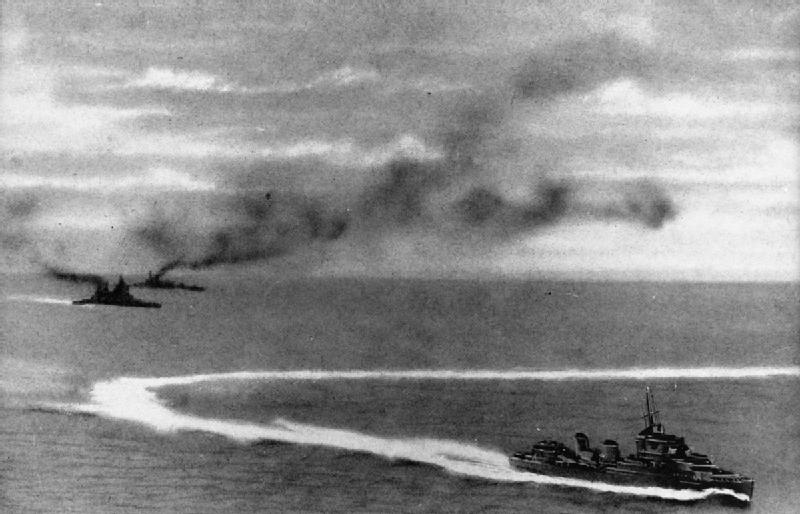On Sudden Unexpected Diminution

I posted my latest thinking on the “why do we still do aircraft carriers?” question over at 1945:
So to reiterate: When every new analysis seems to indicate that carriers can be found by satellites and killed by missiles, why do navies continue to acquire carriers? The fact that countries continue to build them does not necessarily prove the enduring military relevance of carriers because, of course, navies continued to build battleships well into World War II, after it became clear that they could not offer a good return on investment. Two answers are worth considering.
I don’t dig fully into the analogy there but why don’t we do so here? I hold to a few defensible assumptions with respect to the battleship experience in World War II:
- The contribution that battleships made to surface combat actions is generally underrated.
- The use of naval artillery in amphibious operations was extremely important to the degree of success achieved by such ops.
- Battleships were less vulnerable to both air and undersea attacks than is commonly understood.
- The fast battleships built by the Great Powers should not generally be regarded as wastes of effort.
However, none of these assumptions support or extend to the proposition that the Great Powers should have built more battleships prior to and during the conflict. Thus, I think that the question “didn’t navies waste time building obsolete battleships?” is important even if ultimately answerable, as it gets to the bigger question of how militaries assess and react to obsolescence. A different way of asking this would run “did navies stop building battleships as a result of Bismarck/Taranto/Pearl Harbor/Malaya?” Let’s take a look at the major battleship construction plans as of September 1939:
- Soviet Union: 4 battleships and 2 battlecruisers under construction, 11 more battleships on order, all suspended or cancelled as of June 1941.
- France: 3 battleships under construction, 3 on order. Construction suspended on June 1940, two most advanced ships later completed and the rest cancelled.
- Italy: 4 battleships under construction, three completed, one suspended January 1942.
- Germany: 4 battleships under construction, four on order. Two completed, six suspended September 1939.
- United Kingdom: 7 battleships under construction, four on order. Five completed, six suspended November 1939, cancelled 1944. One additional ship laid down 1941, completed 1946.
- Japan: 2 battleships under construction, three on order. Two completed, one completed as aircraft carrier, two cancelled June 1942.
- United States: 5 under construction, 3 on order. All eight of those are completed, plus two more are both ordered (June 1940) and completed, 7 more ordered/authorized by December 1940, two of which are laid down. Five cancelled 1943, two suspended 1945.
Our potential inflection points with respect to the relative utility of aircraft vs. battleships are November 1940 (attack on Taranto result in damage to several battleships), May 1941 (when Swordfish bombers cripple Bismarck), and December 1941 (twin blows of Japanese attack on stationary battleships at Pearl Harbor and Japanese destruction of HMS Repulse and HMS Prince of Wales while underway).
Every story is idiosyncratic and things are messy. Germany and the UK basically give up on new battleships beyond those near completion as soon as the war starts, but the UK builds a boatload of carriers (so to speak). France suspends at the conclusion of its war but it actually rushes both Richelieu and Jean Bart in anticipation of using them. The Soviets give up the day that their war begins (and have some post-war thinking that never really pans out). The Italians diligently complete three and suspend at a point where the naval balance in the Med is still in doubt… and they keep working on an aircraft carrier. The Japanese essentially give up around Midway and devote everything to carriers. US builds a lot of battleships but three things 1) its existing battleship fleet is the slowest and least useful as carrier escort of any of the Great Powers, 2) US industrial capacity is practically limitless, and 3) the US builds a shit-ton of carriers (so to speak).
So to sum up (answers may not match total due to rounding errors):
- Three countries give up on BBs when their wars begin
- One country gives up when its war ends, prior to any of the inflection points
- Three countries (UK, US, Japan) definitely redistribute effort towards CVs, the British probably anticipating the shift more quickly than the other two (they keep carriers in production that were at roughly the same stage as HMS Lion in November 1939) but they don’t make the big turn until mid-1942. Americans and Japanese make their turns at roughly the same point, IJN maybe a touch later. Italy seems too idiosyncratic to take seriously.
So yeah; I think there’s something to be said (without reference to archive or memoir) for a relatively sudden shift in procurement priorities based on wartime experience. This is to say that experience with the obsolescence of battleships doesn’t disprove the notion that aircraft carriers could face a sudden reverse at some point.


